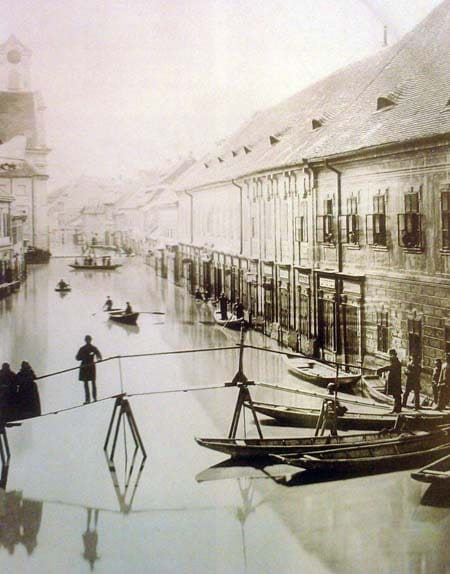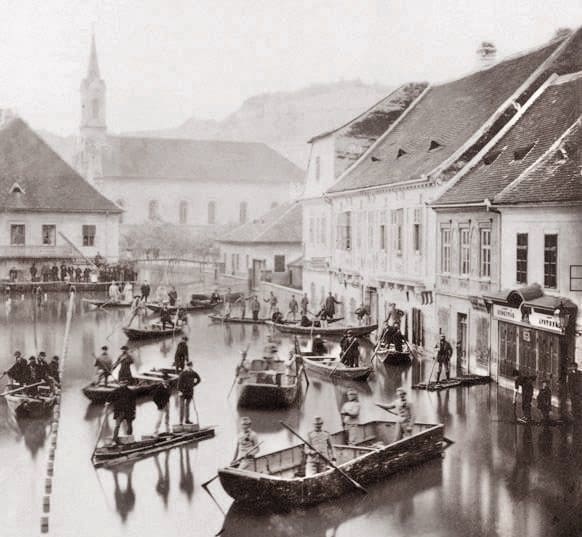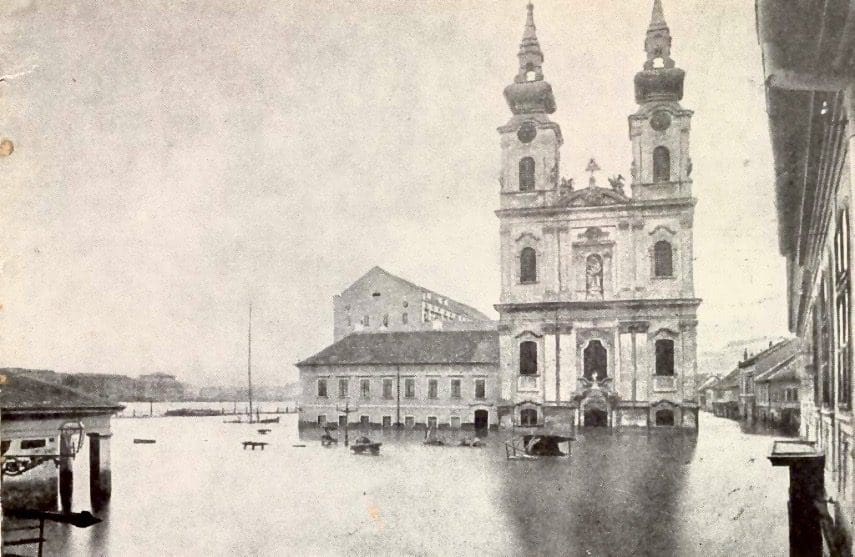From the middle of the 19th century, the issue of regulating the Danube was becoming increasingly urgent. After the flood of 1838, the next Diet also put the matter of regulating Hungarian rivers on its agenda. Nevertheless, neither during the 1839–1840 session of the National Assembly, nor in the following decades was there a breakthrough in the matter. Before the Hungarian Revolution of 1848, even Count István Széchenyi, ‘the Greatest Hungarian’, failed to raise enough funds for works to be started.
Work finally began in the 1870s, but due to the extremely low temperatures during the winter of 1875–76, massive ice jams obstructed the flow of the Danube, which resulted in three successive floods.
On 14 March 1876, the flood hit the Buda side of the Danube, then two days later, the river flooded Újpest, the Tabán and Lágymányos as well, and completely submerged Margaret Island.

The streets of Buda looked like Venice—boats were the only feasible means of transportation.
During the flood, a total of 19,400 people had to be evacuated, most of them from the Pest side, where due to the rise of the groundwater, basement apartments that were common at the time became uninhabitable.
Although the new flood defences completed by the autumn of 1875 lived up to their promise because the water of the Danube could not enter the inner area of Pest anymore, it easily covered the low embankment in Buda, and large areas of Ráczváros and Víziváros were soon awash, too. The Danube peaked at 8.67 metres in Budapest.
The Budapest daily, Pesti Napló, said the following in its 29 March 1867 issue:
‘The result of the joint work of the men of Budapest speaks louder than any words of praise and glorification, and the capital will always proudly recall it that during the four-week flood, in which three areas of the city were under water, hundreds of houses collapsed and 19,000 people had to be evacuated and fed for longer or shorter periods, and in the midst of so much danger and misery, not a single human life was lost in Budapest, and not a single person was left without a roof over his head or without bread.’

Technology also helped during the coldest days: at the beginning of the flood, the post office installed a direct telegraph line through which the authorities could keep in touch with the settlements along the Danube. More than ten thousand telegrams were sent during the flood, which enormously facilitated communication and information exchange.
Click here to read the original article







